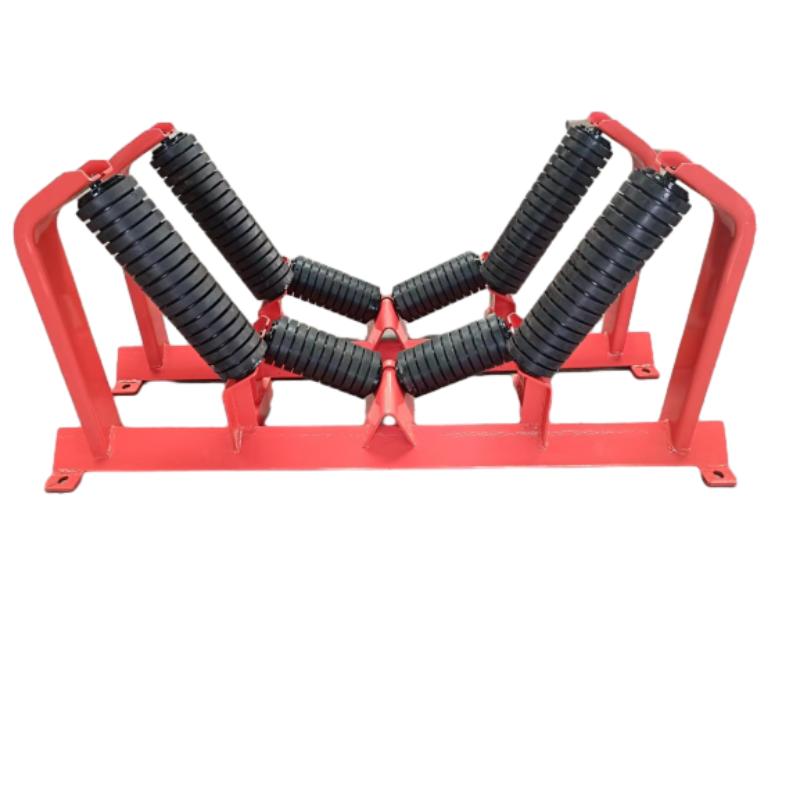Belt Conveyor Impact Idler: Reduce Shock, Extend Belt Life?
Field Notes on a Belt Conveyor Workhorse: Impact Idlers That Survive the Drop Zone
A few months back I stood on a dusty receiving chute watching a belt conveyor impact idler do the quiet, unglamorous job it was designed for: soaking up energy where bulk material free-falls onto the belt. It’s not flashy, but when it’s wrong, you’ll know—belts scuff, splice life drops, and maintenance teams go nocturnal. When it’s right, everything downstream runs smoother, longer, cheaper.

What’s trending (and what actually matters)
Across quarries, ports, and cement plants, buyers are nudging vendors toward lower rolling resistance, better sealing (IP-rated, please), and smarter materials. Composite tubes show up occasionally, but steel still rules for harsh impact zones. Predictive maintenance? It’s coming—vibration + temperature tags are moving from “nice” to “standard,” slowly. And yes, many customers say they’ll pay a bit more for idlers that survive wet fines and shock loads without chewing belts.
Technical snapshot
The belt conveyor impact idler sits under the receiving chute, replacing standard carrying rollers with rubber-ringed rollers spaced tightly (≈100–250 mm centers) to absorb impact energy. Typical builds use Q235 steel tubes, 45# steel shafts, labyrinth + contact seals, and NR/SBR shock-absorbing rings around 65–75 Shore A. In real life, spacing and ring hardness depend on lump size, drop height, and belt speed.
| Parameter | Typical Range (≈) | Notes (real-world use may vary) |
|---|---|---|
| Roller diameter | 89 / 108 / 133 / 159 mm | Match belt width and impact duty |
| Face length | 350–1,600 mm | Troughing 20°–35° common |
| Rubber rings | NR/SBR, 65–75 Shore A | ISO 4649 abrasion-focused |
| Sealing | Multi-labyrinth + contact | Target IP65 per IEC 60529 |
| Balance grade | G6.3 (ISO 1940-1) | Keeps noise and wear down |
| Service life | ≈30,000–50,000 h | Assumes proper alignment and sealing |
How it’s made and validated
Materials: Q235 steel tube, cold-drawn 45# shafting, rings in NR/SBR blends, NLGI-2 lithium grease. Methods: CO₂ automatic welding, shot blasting (≈Sa2.5), powder coating or epoxy (film ≈80 μm). Testing: dynamic balance G6.3, runout ≤0.7 mm, seal water-dust ingress (aiming IP65), bearing life per ISO 281, coating per ISO 2808, optional salt spray (ASTM B117, 72–120 h). The belt conveyor impact idler is ultimately judged by one thing: how kindly it treats the belt per ISO 14890 guidance.

Applications and advantages
Use in coal and ore receiving hoppers, primary crusher drops, clinker transfer points, biomass feed, and port ship-unloaders. Advantages: reduced belt gouging, lower splice stress, noise attenuation (operators tell me ≈2–3 dB(A) drop), and fewer emergency shutdowns. Honestly, the ROI often hides in avoided belt replacements.
Vendor comparison (quick take)
| Vendor | Sealing | Certs | Lead Time | Customization | Warranty |
|---|---|---|---|---|---|
| RAOHUA (Hebei, China) | Labyrinth + contact, IP65 target | ISO 9001; CEMA/ISO compliance | ≈2–4 weeks | High (diameter, ring, coatings) | 12–24 months |
| Vendor A (Global) | Labyrinth only | ISO 9001 | ≈4–6 weeks | Medium | 12 months |
| Vendor B (Regional) | Basic seal | Factory QA only | ≈1–3 weeks | Low | 6–12 months |
Customization tips
Specify belt width, drop height, largest lump size, belt speed, and ambient conditions. Options include 89–159 mm rollers, ring hardness tuning, hot-dip galvanizing, food-grade or anti-static rings, and sensor-ready end caps. RAOHUA’s plant at East Outer Ring Road, Yanshan County, Cangzhou, Hebei, can tweak spacing for very high impact zones without breaking budgets.
Field results (two quick stories)
Quarry retrofit: Swapped worn carries for belt conveyor impact idler sets under a 2.8 m drop. Belt gouging dropped visibly; maintenance reported ~35% fewer hot repairs over six months. Port terminal: After monsoon ingress issues, a switch to dual-seal idlers cut water intrusion complaints to near-zero, and operators liked the quieter load zone—small win, but real.

Bottom line
If you’re speccing an impact section, don’t skimp on sealing, ring hardness, and spacing. The belt conveyor impact idler guards your most expensive consumable—the belt. Get that right and, to be honest, everything else feels easier.
Authoritative references
- CEMA: Belt Conveyors for Bulk Materials, 7th ed.
- ISO 1537: Idlers for belt conveyors — Troughing idlers.
- ISO 14890: Conveyor belts — Specification for rubber- or plastics‑covered belts.
- ISO 1940-1: Mechanical vibration — Balance quality requirements for rotors.
- IEC 60529: Degrees of protection (IP code) for enclosures.
-
Impact Roller for Belt Conveyor – Durable Solutions for IndustryNewsNov.24,2025
-
Rubber Conveyor Rollers – Quiet, Durable, Sealed BearingsNewsNov.24,2025
-
Industrial Conveyor Belt Rollers: Durable Solutions for Harsh EnvironmentsNewsNov.24,2025
-
Idler Rollers for Belt Conveyors | Durable, Low-Noise OEMNewsNov.24,2025
-
Durable Rubber Conveyor Belt Rollers for Industrial UseNewsNov.24,2025
-
Ceramic Lagging Conveyor Pulley – Anti-Slip, Wear-ResistantNewsNov.17,2025






























